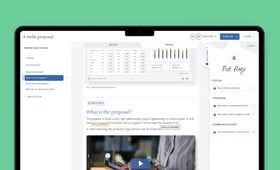An effective board pack is one that stimulates the boardroom conversation and records good governance. In this article, we discuss how a board pack can promote and evidence an effective board.
1. Focused board input
All too often, boards get bogged down in the same old topics without considering what their organization needs right now. This tends to happen when management sees the board more as a “rubber stamp” than a rich hub of skills and experience to draw from.
Focused boards are effective boards. They identify their priorities yearly, considering the breadth of their role and the needs of their organization. Their board calendar allocates time to these priorities, as well as the routine items and those that are impossible to predict. Good board papers should be clear about the input required from the board. As a start, it may include a tick box stating whether the paper is to be noted, to be discussed, or to drive a decision. But management could go further, for example, by requesting the board’s advice on a specific approach or explaining the implications of a delayed decision.
2. Key messages upfront
Many board reports start with a general introduction to the topic, meaning readers have to wade through multiple pages before the focus of the paper (and management’s question or recommendation) becomes clear. This is unsustainable for the time-poor director who must move between different topics as they navigate through the board pack.
We recommend starting every board paper with a strong executive summary that provides a snapshot of the whole report. This will ensure that the reader doesn’t miss the key messages and will enable them to absorb the rest of the information more easily. It will help them prepare effectively for the board meeting. We recommend a simple structure for the executive summary, with one or two sentences per section:
- Context: Why the board is receiving the paper now, and how it links to the organization’s goals.
- Questions covered: The highest-level questions the paper seeks to answer.
- Conclusions drawn: A summary of the answer for each of the questions posed
- Input needed: A summary of any decision and/or advice needed from the board.
3. Clear discussion outcomes
Board meeting minutes are not the only way to record the outcomes of board discussions, and they’re not well-suited to tracking the progress of board actions or delegations.
Board packs should include a regular Action Tracker to record the progress of agreed-upon actions, separating the outstanding from the in-hand and closed actions. Similarly, where the board has delegated discussions to committees, an update on their outcomes is vital. Instead of committee minutes, you can use a concise update report. This can simply highlight the meeting agenda items, key discussion points, and any agreed-upon actions.
Want to find out more or start applying these tips to your board? Get in touch.



